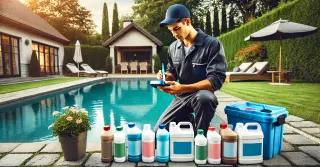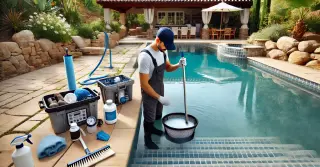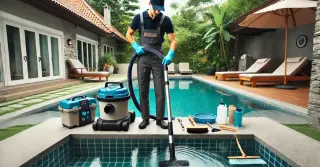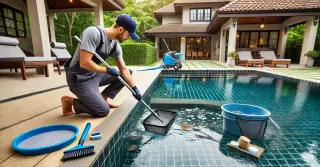Pool Chemical Balance Shiloh NJ

Keeping your pool's chemical balance in check is essential for a safe and enjoyable swimming experience. Balanced chemicals inhibit algae and bacteria, ensure clear water and protect pool surfaces and equipment.
- Balancing pH Levels: Your pool's pH level is a measure of its acidity or alkalinity. A balanced pH level should be between 7.2 and 7.6. If the pH is too low, the water becomes acidic, which can cause skin irritation and corrosion of pool equipment. High pH levels make the water alkaline, leading to cloudiness and scaling. Consistently testing and adjusting pH levels is vital for swimmer comfort and safety.
- Managing Chlorine Concentration: Chlorine is essential for pool hygiene, as it kills bacteria, algae, and other harmful microorganisms. Optimal chlorine levels range from 1 to 3 ppm. Insufficient chlorine results in unsanitary conditions, promoting bacteria and algae growth. High chlorine levels result in skin and eye irritation and create a strong chlorine smell. Regularly testing and adjusting chlorine levels ensures sanitation and comfort.
Managing Total AlkalinityTotal alkalinity is another critical aspect of pool water chemistry. Alkalinity buffers pH levels, avoiding sudden pH changes. The optimal total alkalinity range is 80-120 ppm.
- Avoiding pH Fluctuations: Proper alkalinity levels help stabilize pH levels, preventing rapid pH changes that irritate skin and damage surfaces. Low alkalinity causes pH levels to fluctuate, making balance maintenance challenging. Excessive alkalinity results in cloudy water and scaling. Consistently monitoring and adjusting alkalinity levels is crucial for stable and balanced water.
- Calcium Hardness Control: Calcium hardness indicates the calcium level in pool water. Optimal calcium hardness levels are between 200-400 ppm. If calcium levels are too low, the water becomes corrosive, damaging pool surfaces and equipment. Excessive calcium causes scaling and water cloudiness. Frequent calcium hardness testing and adjustments is crucial for safeguarding your pool and maintaining clear water.
Proper Chemical Use and StorageHandling and storing pool chemicals properly is essential for both safety and effectiveness. Keep chemicals in a cool, dry location, away from direct sunlight, children, and pets. Adhere to manufacturer guidelines for dosing and application.
- Measuring and Mixing Chemicals: Measuring pool chemicals accurately is vital for correct balance. Using too much or too little can imbalance chemicals and harm water quality. Always use a clean, dry measuring tool and never mix chemicals directly with each other. Mix in water as needed, following guidelines carefully.
- Understanding Chemical Reactions: Certain chemicals can react dangerously if mixed. Never mix chlorine with acid, for example. Being aware of these interactions prevents accidents and ensures safe handling. Store chemicals separately and handle each with care to prevent harmful reactions.
Keeping your pool's chemical balance is vital for a safe, clean, and pleasant swimming experience. By frequently testing and balancing pH, chlorine, alkalinity, and calcium, you can keep your pool water in optimal condition.
Proper chemical use and storage enhance the health and safety of your pool.




